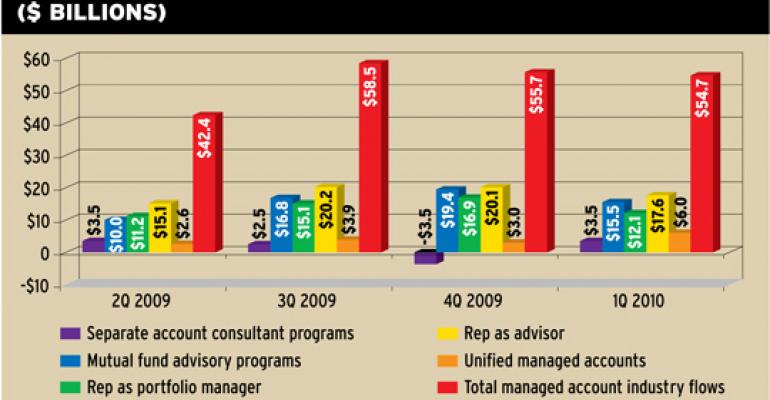Unified managed accounts (UMAs) have been slow to win favor with advisors, accumulating just $79 billion in assets over the past half-decade. But recent research from Cerulli Associates projects that UMA assets will reach $327 billion by 2013 (for a 35 percent compound annual growth rate). So far this year, they are growing faster than other managed account categories like mutual fund advisory, rep as portfolio manager and non-discretionary rep as advisor programs. Whereas these other managed account programs recorded declines in net new assets in the first quarter, UMAs and SMAs recorded increases in inflows.
UMAs, which allow advisors to fully outsource the operational side of the investment management process while retaining some discretionary control over the actual investment decisions, may have benefitted from a stabilizing market in the first quarter, says Cerulli's Jeff Strange. “The closer we get back to advisors taking a longer-term view of investments and becoming more comfortable with risk, that is going to benefit UMA programs,” he says. Advisors opted for full discretion and shorter-term tactical asset allocation during the financial crisis, says Strange. Now advisors are more comfortable sharing discretion with UMA sponsors and taking advantage of the alternatives exposure, long-term tactical asset allocation and tax efficiency features that UMAs offer.






